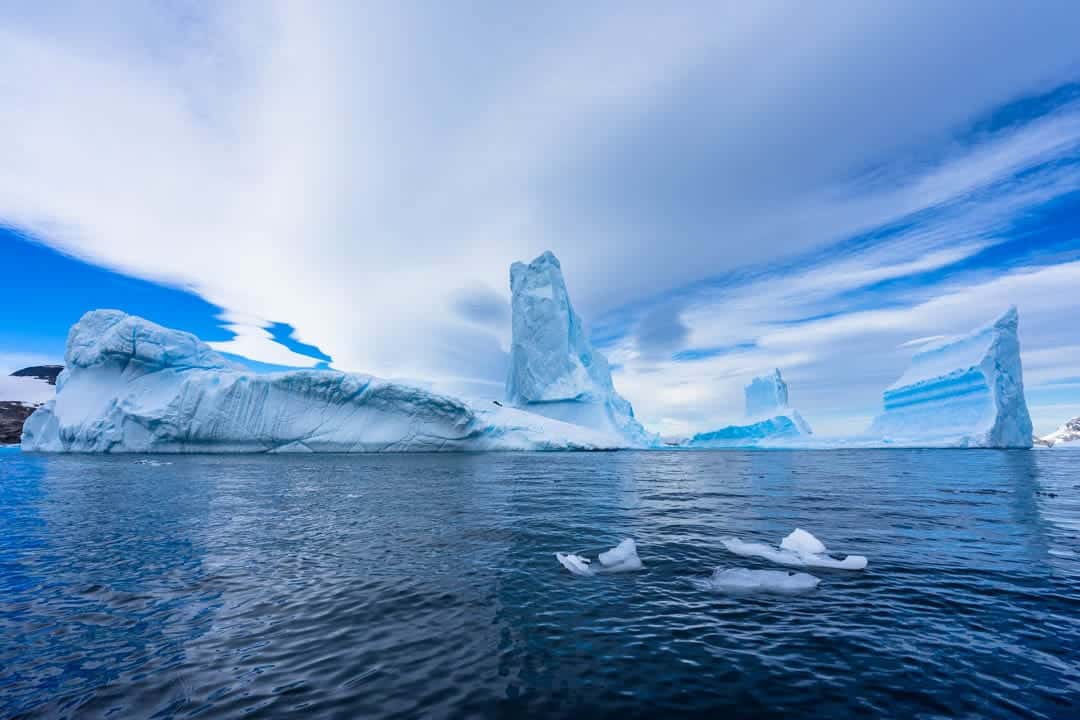
Here is your complete guide to visiting Cierva Cove, a beautiful and otherworldly spot along the western Antarctic Peninsula.
Cierva Cove is a breathtaking and pristine coastal area in Antarctica with abundant wildlife.
Situated along the western Antarctic Peninsula near the Gerlache Strait, this picturesque cove feels like one of those classic Antarctic spots that show off just how wild and magical the continent can be.
Huge glaciers spill into the water, breaking off into all sorts of floating icebergs that drift around the cove like a natural art display.
It’s also a great place for spotting animals—seals often lounge on the ice, whales like humpbacks and minkes show up to feed, and seabirds soar overhead.
The cove is also home to the Argentine research base, Base Primavera, an earlier naval refuge built in 1954 which in 1977 became an important site for Antarctic studies and research.
With its mix of towering mountains, glittering ice, and plenty of wildlife, Cierva Cove is one of the coolest places to visit in Antarctica!
Read next: Antarctica Vs Arctic Travel Guide
Landscape of Cierva Cove
Cierva Cove is located on the west coast of Antarctica. The landscape includes snow-capped mountains, serene icy waters, and towering glaciers that regularly calve into the sea.
On calm days, the glassy surface of the cove mirrors the peaks and brash ice, creating picture-perfect reflections. Cierva Cove is a photographer’s dream!
It’s a place where the scenery is always changing—new ice drifts in, light shifts across the mountains, and the whole area feels both dramatic and peaceful at the same time.
Cierva Cove is positioned to the southeast of Cape Sterneck, a rugged glacial face in Hughes Bay on Graham Land.
To the south of the cove, you’ll find Paradise Harbor and Wilhelmina Bay, both popular stops for Antarctic cruises.
This area of Graham Land is also close to the Lemaire Channel, a narrow and iconic passage famous for its dramatic cliffs and iceberg scenery, making Cierva Cove part of a cluster of breathtaking sites along the Danco Coast.
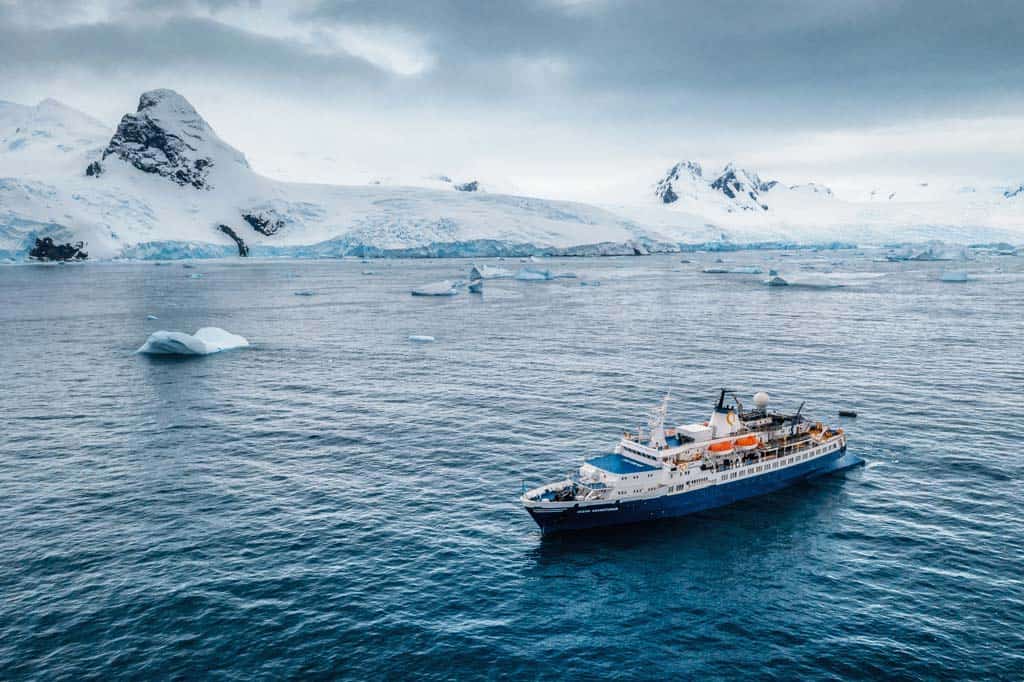 There are glaciers everywhere you look. It is incredible.
There are glaciers everywhere you look. It is incredible.
Important Note! Before you book any international trip, we honestly recommend getting travel insurance. You never know when things will go wrong, and medical bills can add up quickly if you get sick or injure yourself overseas.
Our personal recommendation based on our own experience is World Nomads.
Wildlife of Cierva Cove
The icy waters of Cierva Cove are home to a rich and diverse array of marine wildlife. Here are some iconic creatures you may be able to spot during your visit!
Get inspired with our list of the best Antarctica animals to see on your travels.
Whales
Humpback whales and minke whales are the most common whales to spot here, especially in the Austral summer months (December to March) when they come here to feed on krill.
The best way to see whales in Cierva Cove is by visiting on a small expedition cruise, as most ships exploring the Antarctic Peninsula include this spot on their itineraries.
When conditions allow, passengers often head out in Zodiacs—small inflatable boats that let you get close to the water and drift quietly among the icebergs, which is perfect for whale watching.
Seals
Seals are also a common sight in Cierva Cove, with species such as Weddell seals and crab-eater seals often spotted on the ice floes.
Leopard seals may even be spotted amidst the ice formations, though they are more elusive and require mote patience to find.
These marine mammals create a lively and dynamic atmosphere, providing opportunities for close-up encounters and photography.
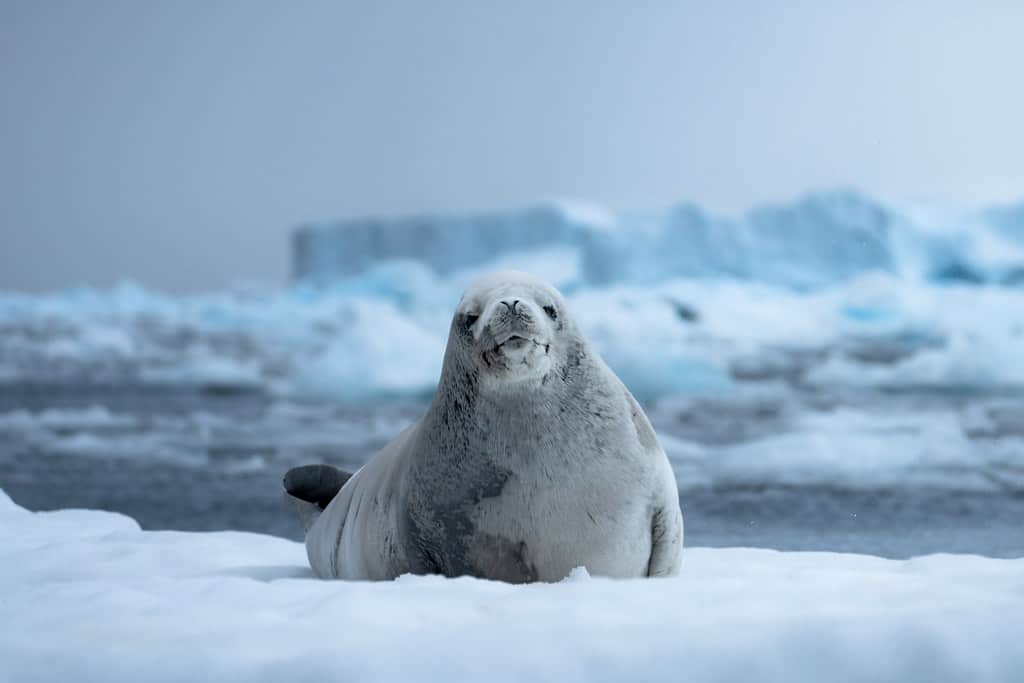 Crabeater seal lounging on the ice
Crabeater seal lounging on the ice
Seabirds
Cierva Cove is a lively spot for seabirds, thanks to its mix of rocky cliffs, glaciers, and open water that provide plenty of nesting and feeding opportunities.
Antarctic terns and skuas are some of the most common sights, often darting over the water or patrolling the ice for food.
You might also spot Wilson’s storm petrels fluttering low across the surface, along with kelp gulls and sheathbills hanging around the shoreline.
The variety of seabirds makes the cove feel full of life, and watching them swoop and dive against the backdrop of towering glaciers is a highlight for many visitors.
Penguins
Because the cove is mainly composed of massive cliffs and calving ice, penguins do not have a permanent home here.
However, chinstrap penguins and gentoo penguins can sometimes be spotted playing on the surrounding cliffs or swimming in the waters.
They don’t live here permanently, but lucky visitors may still see a few penguins frolicking in the area.
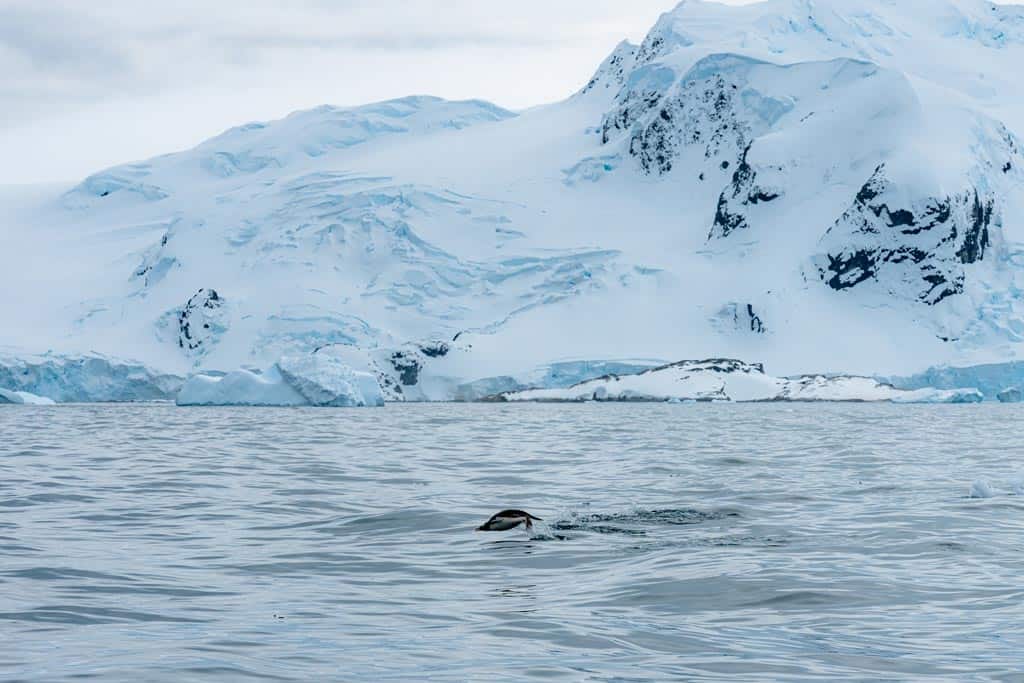 Gentoo penguin diving in the waters around Cierva Cove
Gentoo penguin diving in the waters around Cierva Cove
History and Scientific Research
Cierva Cove was named in 1927 by a British expedition in honor of Juan de la Cierva, a Spanish engineer.
The name reflects Antarctica’s tradition of recognizing pioneers of exploration, science, and technology.
Over the years, the cove has also become known for its scientific importance. Argentina established Base Primavera in 1977, which is used for research during the Austral summer.
Base Primavera was originally an earlier naval refuge built in 1954, but now it exists solely for research.
This Argentine research base is a hub for studying the region’s rich wildlife and unique landscapes. Researchers often focus on the surrounding penguin and seabird colonies.
Base Primavera is relatively small and seasonal, but its presence highlights Argentina’s long-standing interest in Antarctic exploration and research.
While the cove itself has no history of permanent settlement, it has long been a stop for explorers, scientists, and now expedition cruises, drawn by its sheltered waters, wildlife, and dramatic scenery.
Read next: Top Adventure Activities In Antarctica
Visiting Cierva Cove, Antarctica
Shore landings are not possible in Cierva Cove because it is a protected Antarctic area.
Instead, visitors can enjoy Zodiac cruises in the cove to view the stunning icebergs, ice formations, and wildlife, and pass by the Argentine research station Base Primavera.
The only way to visit Cierva Cove is on an expedition cruise, as there are no airports or permanent facilities in the area.
Trips usually depart from Ushuaia, Argentina, and run during the Antarctic summer (November to March), when the waters are more navigable and wildlife is at its most active.
Visiting Cierva Cove is all about timing, good weather, and the luck of the ice—but when it works out, it’s one of the most memorable highlights of an Antarctic journey.
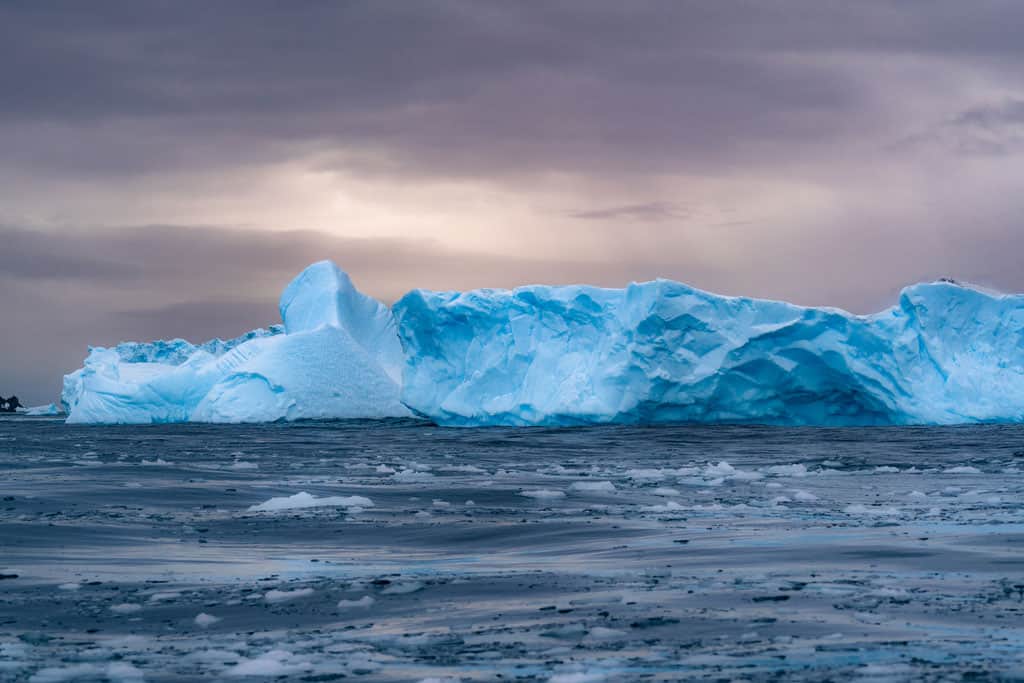 When we visit Antarctica, it always blows our minds at just how interesting the ice covered continent is.
When we visit Antarctica, it always blows our minds at just how interesting the ice covered continent is.
DISCLAIMER: Some of the links in this article are affiliate links, which means if you book accommodation, tours or buy a product, we will receive a small commission at no extra cost to you. These commissions help us keep creating more free travel content to help people plan their holidays and adventures. We only recommend the best accommodations, tours and products that ourselves or our fantastic editorial team have personally experienced, and regularly review these. Thanks for your support, kind friend!
